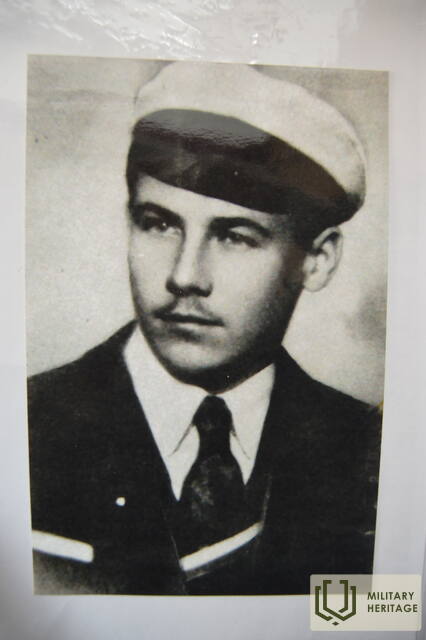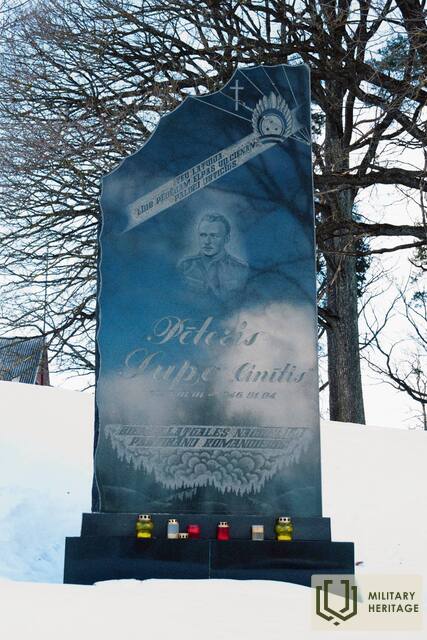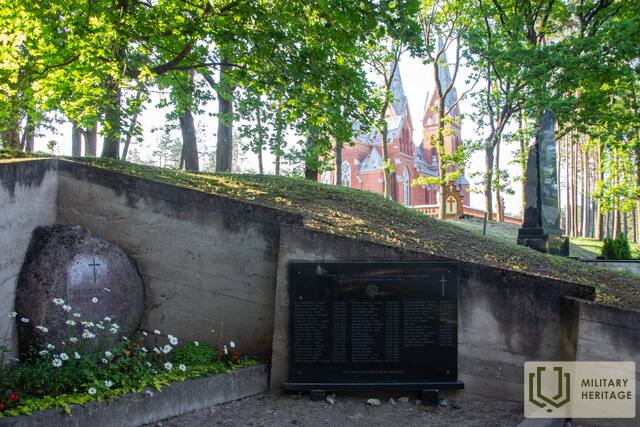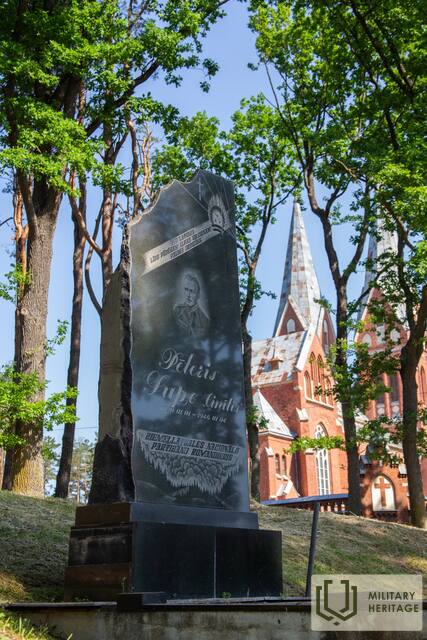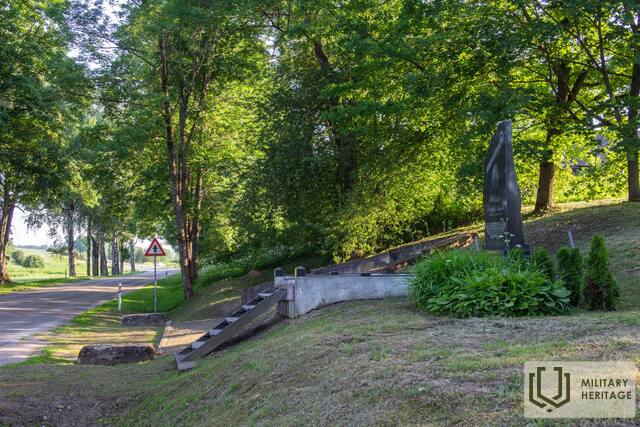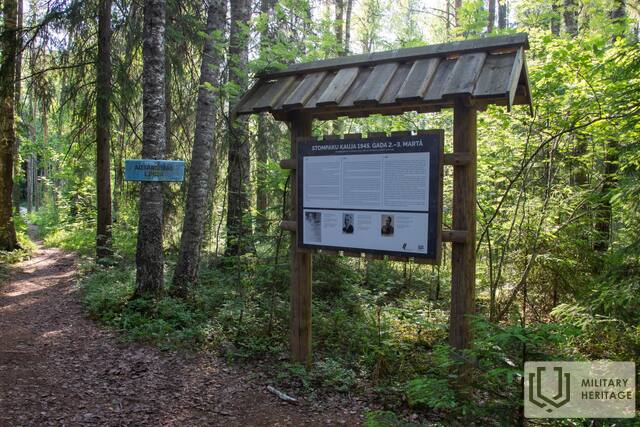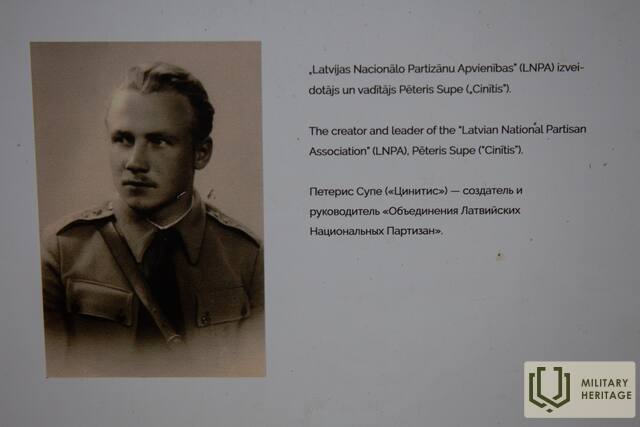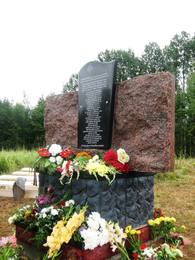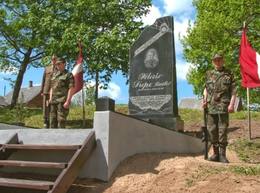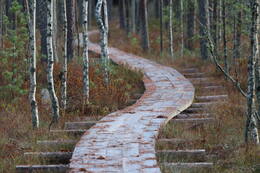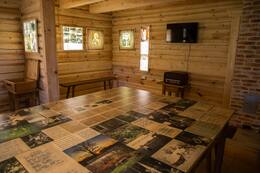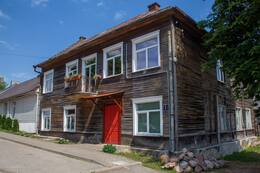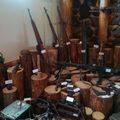Pēteris Supe – Initiator der Gründung des Lettischen Nationalen Partisanenverbandes
Von 1944 bis 1946 gelang es Pēteris Supe, die in den Wäldern verstreuten nationalen Partisaneneinheiten zu einer organisierten Bewegung zu vereinen, die den Kampf gegen die Besatzung Lettlands im Kreis Abrene noch mehrere Jahre nach dem Zweiten Weltkrieg fortsetzte. Pēteris Supe, genannt „Cinītis“, war einer der herausragendsten Organisatoren und Anführer der nationalen Partisanenbewegung in Nordlatgale.
Pēteris Supe wurde 1920 im Bezirk Abrene der Gemeinde Purvmala im jungen Haus Dārzas geboren. Schon als Kind engagierte er sich in der Kleinbauernbewegung und war der Einzige im gesamten Bezirk, dem der Titel „Līdumnieks“ verliehen wurde. Mit 17 Jahren schloss er das Gymnasium in Viļaka ab, studierte anschließend an der Landwirtschaftlichen Fakultät der Universität Lettlands in Jelgava und wurde mit 20 Jahren zertifizierter Agronom.
Zeitgenossen beschrieben ihn als einen sehr unternehmungslustigen, fähigen und national gesinnten Mann, ja bisweilen fanatisch, mit guten rhetorischen und psychologischen Fähigkeiten. Während der deutschen Besatzung war er Chefagronom des Kreises Abrene. Als die Sowjetarmee Ende 1944 auf Latgale und Vidzeme vorrückte, ging P. Supe ins Exil und kehrte als Kommandant einer deutschen Aufklärungsgruppe in seine Heimat zurück. Es sei jedoch betont, dass er als wahrer Patriot weder auf deutscher noch auf sowjetischer Seite dienen wollte. Die Deutschen bereiteten den ehemaligen Agronomen auf Kämpfe hinter den feindlichen Linien in den sogenannten „Waldkatzen“-Einheiten vor, doch P. Supe, der auf westliche Hilfe bei der Wiedererlangung der lettischen Unabhängigkeit hoffte, wählte einen anderen Weg. Während einer der ersten Aufklärungsmissionen im Auftrag der Deutschen auf der Seite von Abrene bemerkte er die große Anzahl von Letten, die zur Roten Armee eingezogen worden waren, aber später desertiert waren. Er bat per Funk die Deutschen um Waffenlieferungen per Flugzeug zur Bildung bewaffneter Gruppen, was ihm jedoch verweigert wurde. Der Krieg war noch nicht beendet, als P. Supe im Herbst 1944 beschloss, den Dienst für die Deutschen zu quittieren und eine nationale Widerstandsbewegung zu organisieren.
Peteris Supe initiierte die Gründung des Lettischen Nationalen Partisanenverbandes (LNPA – aktiv bis 1953). Sein Stellvertreter war Staņislavs Ločmelis („Dūze“), ein ehemaliger Student der Wirtschaftswissenschaftlichen Fakultät der Universität Lettlands. Die Gründungsversammlung fand am 10. Dezember 1944 im Wald nahe des Dorfes Stompaki statt. Der Verband verfügte über ein eigenes Hauptquartier, Abteilungen für Propaganda, Wirtschaft und Spionageabwehr, ein Gericht und sogar eine Zeitung. Zum Gründungszeitpunkt zählte er 123 Mitglieder, doch bereits 1945 waren es laut Militärkommissariat des Bezirks Viļaka 1.000. Bald kontrollierte die Organisation Partisanengruppen in den Bezirken Viļaka, Alūksne, Valka, Gulbene, Cēsis und teilweise auch in Madona.
Anfang Januar 1945 begannen Partisanen der LNPA auf Befehl von P. Supe, sich in den Stompaki-Sümpfen zwischen Balvi und Viļakas zu versammeln. Dort errichteten sie auf mehreren Sumpfinseln ein Lager, das ohne Übertreibung als das größte Partisanenlager im gesamten Baltikum gelten kann. Sein offizieller Partisanenname war „Saliņu mītnes“, es war aber auch unter dem Namen „Neu-Berlin“ bekannt.
Die Partisanenaktivitäten von P. Supe waren von einem kompromisslosen Krieg geprägt, in dem sowjetische Aktivisten, die gegen die Partisanen kämpften, ohne Zögern getötet wurden. Supes Partisanen gewannen Anfang März 1945 auch die berühmte Schlacht von Stompaki, indem sie ihren gut ausgerüsteten Stützpunkt auf den Inseln des Stompaki-Sumpfes verteidigten. Es war die größte Schlacht in der gesamten Geschichte der lettischen Partisanenbewegung, an der 300 Kämpfer auf Partisanenseite und über 560 auf sowjetischer Seite teilnahmen. Als talentierter Kommandant hätte er alle Möglichkeiten gehabt, den Partisanenkrieg in Lettland schrittweise von einem Kampf einzelner Einheiten zu einer umfassenden, gut geführten Bewegung auszubauen, wäre Pēteris Supe nicht am 1. April 1946 von Jānis Klimkāns, einem in die Reihen der Partisanen eingeschleusten Tscheka-Agenten, erschossen worden. P. Supe wurde während einer Partisanenversammlung in der Gemeinde Jaungulbene getötet, als der Verräter Jānis Klimkāns das Feuer auf P. Supe und seinen Stellvertreter Henriks Ausekls (Tāraud) eröffnete.
Lettische Nachrichten, 2005
Sowjetische Besetzung Lettlands, 1944 – Ende der 1950er Jahre. Gründung und Aktivitäten des Lettischen Nationalen Partisanenverbandes während der Stompak-Zeit.
Zugehörige Zeitleiste
Zugehörige Themen
Zugehörige Objekte
Denkmal für die Teilnehmer der Widerstandsbewegung in Stompaki
Das Hotel liegt 15 km von Balvi entfernt in Richtung Viļaka, auf der rechten Straßenseite.
Ein Gedenkschild ist sichtbar.
Am 11. August 2011, dem Gedenktag der lettischen Freiheitskämpfer, wurde an der Straße Balvu-Viļakas gegenüber dem Stompaku-Sumpf ein Denkmal für die Teilnehmer der Widerstandsbewegung enthüllt. Es ist den nationalen Partisanen von Pēteris Supe gewidmet, die in den Kämpfen vom 2. und 3. März 1945 gefallen sind. Ende Juli wurde eine Zeitkapsel mit einer Botschaft für zukünftige Generationen in das Fundament des Denkmals eingelassen. In der Kapsel befindet sich ein Dokument mit den Namen von 28 nationalen Partisanen, die in den Kämpfen vom 2. und 3. März 1945 gefallen sind.
Im Februar 1945 wurde auf den Inseln des Stompaku-Sumpfes, die die Bevölkerung bald als Stompaku-Sumpfinseln bezeichnete, zwei Kilometer von der Straße Balvi-Viļaka entfernt, das größte Partisanenlager Lettlands errichtet. Dort lebten 360 Menschen in 22 Unterständen. Unter ihnen befanden sich auch Legionäre, die nach dem Rückzug ihrer Division mit all ihren Waffen im Haus ihres Vaters geblieben waren. Um die Partisanen zu vernichten, griffen Soldaten zweier Tscheka-Bataillone am 2. März 1945 die Unterstände zusammen mit Panzerabwehrkanonen an, die auch über vier Mörser verfügten. Die Kämpfe dauerten den ganzen Tag. Die Partisanen leisteten hartnäckigen Widerstand, und die Angreifer erlitten schwere Verluste, sodass sie das Lager nicht einnehmen und die Partisanen nicht vernichten konnten. 28 Bewohner des Stompaku-Sumpfes fielen in der Schlacht oder starben an ihren schweren Verletzungen. In der folgenden Nacht gelang es den Partisanen schließlich, das Lager zu durchbrechen. „Belagerung und unbesiegt zurückgelassen“ – so schreibt Zigfrīds Berķis, Vorsitzender der Kommission für die Angelegenheiten der Teilnehmer der Nationalen Widerstandsbewegung in der Auszeichnungsabteilung, über die Schlacht von Stompak.
Denkmal für den Kommandanten der nordöstlichen nationalen Partisanen Pēteris Supe - "Cinītis"
Zum Gedenken an den Partisanenführer Pēteris Supe wurde am 28. Mai 2005 in Viļaka ein Denkmal enthüllt. Es befindet sich in der Nähe der katholischen Kirche von Viļaka, am Rande der während des Krieges ausgehobenen Schützengräben, in denen die Tschekisten die erschossenen Partisanen bestatteten. Unter dem Denkmal für P. Supe liegt eine Kapsel mit den Namen von 386 gefallenen Partisanen, Beschreibungen von Schlachten und Informationen über den Partisanenführer. In den Stein ist die Inschrift eingraviert: „Dir, Lettland, blieb ich bis zu meinem letzten Atemzug treu.“
Das Denkmal wurde von Pēteris Kravalis entworfen.
In der Nähe befindet sich ein Denkmal für die lettischen Freiheitskämpfer, die im Stompaku-Wald und an anderen Schlachtorten fielen und in den Jahren 1944-1956 von den Tschekisten ermordet wurden.
Am 20. Juni 2008 wurde an der rechten Wand eine Granittafel enthüllt, auf der die Namen von 55 gefallenen Partisanen in drei Spalten angeordnet waren.
Das Denkmal wurde an der Stelle errichtet, an der die kommunistischen Besatzungsbehörden einst die Überreste ermordeter Partisanen zur Schau gestellt hatten, um die übrige Bevölkerung einzuschüchtern.
Auf der angrenzenden Gedenktafel sind Dankesworte an Pēteris Supe und ein Gedicht von Bronislava Martuževa eingraviert:
"Steh auf, Peter Supe,
Seele, kämpfe im Krieg!
Heute ist euer Blutopfertag.
Auferstanden unter dem Volk.
Geh hinaus und lebe für immer!
In der Kraft und Tatkraft der Jugend,
Es flattert, flattert, flattert
"In der aufgehenden Flagge!"
Das Hauptquartier der nationalen Partisanen im Naturschutzgebiet „Stompaku-Sümpfe“
Während des Zweiten Weltkriegs war der Stompaku-Sumpf eines der größten nationalen Partisanenlager im Baltikum. Heute ist das Gebiet Teil des Naturschutzgebiets Stompaku-Sümpfe. Die Siedlung auf den Sumpfinseln ist über einen markierten Steg zu erreichen.
Anfang 1945 lebten 350–360 Personen, darunter 40–50 Frauen, im Lager der nationalen Partisanen im Stompaku-Sumpf. Das Lager bestand aus 24 halb in den Boden eingebauten Wohnbunkern, die Platz für 3–8 Personen boten. Es gab eine Bäckerei, einen Kirchenbunker und drei oberirdische Anlagen für Pferde. Partisanen aus dem Lager verübten Anschläge auf führende Kräfte des Besatzungsregimes.
Am 2. und 3. März 1945 fand hier die Schlacht von Stompaki statt – die größte in der Geschichte der lettischen Nationalpartisanen. Die 350–360 Partisanen im Lager wurden vom 143. Gewehrregiment des NKWD und lokalen Kämpfern des Istrebikel-Bataillons (insgesamt 483 Mann) angegriffen. Die Schlacht dauerte den ganzen 2. März. In der Nacht zum 3. März gelang es den Partisanen, aus dem Lager auszubrechen und sich in ihren vorherigen Stützpunkt zurückzuziehen. Die Schlacht forderte 28 Partisanen, während der NKWD 32 Kämpfer verlor. Heute befinden sich auf dem Gelände des Lagers Stompaki drei restaurierte Bunker – eine Kirche, ein Hauptquartier und ein Wohnbunker sowie 21 ehemalige Bunkerstandorte. Es wurden Informationstafeln über das Lager und die Schlacht aufgestellt. Es können Führungen gebucht werden
Gedenkmuseum für Broņislava Martuževa - Poesiescheune
Das Broņislava-Martuževa-Museum befindet sich an der Stelle des Geburtshauses der Dichterin in der Gemeinde Indrāni im Landkreis Madona. Es ist in einer renovierten Scheune untergebracht, die Audio- und Videoaufzeichnungen als Zeitzeugnisse der Widerstandsbewegung birgt und über ein von ihr erstelltes Untergrundjournal mit Gedichten und Liedern für die nationalen Partisanen Zeugnis ablegt. Broņislava Martuževa war von Anfang an in der Widerstandsbewegung aktiv. Der nicht erhaltene Hof der Martuževs namens “Lazdiņas“ war auch Zufluchtsort für den Anführer des lettischen nationalen Partisanenverbandes, Pēteris Supe, und seine Kameraden. Hier versteckte sich die Dichterin fünf Jahre lang im Keller ihres eigenen Hauses, traf Partisanen, schrieb Gedichte (darunter Widmungen für die Partisanen Pēteris Supe, Vilis Tomas, die Smilga-Gruppe, Laivenieks, Salns, Celmiņš, Bruno Dundurs usw.), schrieb Lieder und brachte sie den Partisanen bei. Heute werden ihre Lieder von der Gruppe „Baltie lāči“ gesungen. 1950 gab sie im Untergrund zusammen mit Vilis Toms die Zeitschrift „Dzimtene“ heraus. Die Dichterin hat die 11 Ausgaben mit jeweils 10 Exemplaren per Hand abgeschrieben. 1951 wurden die Dichterin, ihr Bruder, ihre Schwester, ihre Mutter und Vilis Toms verhaftet. 1956 kehrte Broņislava Martuževa aus Sibirien zurück. Die Poesiescheune ist sowohl in der Region als darüber hinaus bekannt und wird sowohl von Einheimischen als auch von Auswärtigen gerne besucht. Der Lebenslauf der Dichterin spiegelt das Schicksal Lettlands exemplarisch wider.
Private Ausstellung „Räume von Abrene“
Die Ausstellung „Räume von Abrene“ befindet sich in der Stadt Viļaka, in einem Gebäude mit einer wechselvollen Geschichte. Anfangs befand sich das Gebäude auf dem alten Marienhausen-Marktplatz, später beherbergte es Wohnungen, Büros und verschiedene Geschäfte, und während des Zweiten Weltkriegs war es das Hauptquartier der lettischen Selbstverteidigung, der Gestapo und der Tscheka. Mehrere Ausstellungen zeigen verschiedene Ereignisse und historische Abschnitte in der Stadt Viļaka und ihrer unmittelbaren Umgebung zwischen 1920 und 1960, als Viļaka Teil des Kreises Abrene von Neu-Lettgallen war. Sie zeigen Gegenstände aus dem Partisanenhauptquartier im Stompaku-Sumpf, die mit der nationalen Partisanenbewegung in Lettgallen in Verbindung standen. Außerdem gibt es Dokumente und Fotos aus dem Unabhängigkeitskrieg. Die neueste Ausstellung ist der einst berühmten Motocross-Strecke „Baltais briedis“ gewidmet.
Museum der nationalen Widerstandsbewegung in Renda
Das Museum liegt nur einige Kilometer vom Ortskern von Renda entfernt. Die Ausstellung ist der fünfzigjährigen Geschichte der Widerstandsbewegung in Lettland gewidmet: Widerstand gegen die erste sowjetische Besatzung, die nazideutsche Besatzung, bewaffneter und gewaltfreier Widerstand gegen die zweite sowjetische Besatzung. Die Ausstellung ist in zwei Gebäuden untergebracht. Eines birgt Zeugnisse der ersten sowjetischen und der deutschen Besatzungszeit. Die Ausstellung in der renovierten Scheune ist dem nationalen Partisanenkampf gewidmet. Zwischen den beiden Gebäuden liegt ein Bunker mit authentischer Einrichtung und Schützengräben. Das Museum umfasst auch Laufgräben, Unterstände und einen Hindernisparcours zur körperlichen Betätigung für Besucher. Ein Museumsbesuch sollte im Voraus vereinbart werden.
Im Januar 1946 fand ganz in der Nähe eine der größten Kampfhandlungen der nationalen Partisanen statt, die sog. Schlacht von Āpūznieki, in der sich die nationale Partisanentruppe von Kabile einer großen Übermacht von Kräften der sowjetischen Besatzungsmacht erfolgreich entgegenstellte. Am Schauplatz der Kämpfe wurde ein Rastplatz mit Informationstafeln angelegt.
Viļaka-Museum
Das Viļaka-Museum ist in zwei Gebäuden untergebracht – dem 1913 erbauten katholischen Pfarrhaus, das für die Kulturgeschichte der Stadt von Bedeutung ist, und dem zweiten Gebäude – einem ehemaligen Kapuzinerkloster, dessen Keller eng mit der nationalen Partisanenbewegung in Stompaki und der sowjetischen Tscheka verbunden ist. Den Erinnerungen der Menschen zufolge wurden in diesen Kellern Menschen festgehalten und gefoltert. Das alte Museumsgebäude beherbergt mehrere Ausstellungen, von denen eine die Freiheitskämpfe von 1920 in Nordlettgallen, die Ereignisse des Zweiten Weltkriegs – den jüdischen Holocaust in Viļaka - und Informationen über die erschossenen Familien zeigt. Über jede Familie kann man anhand ihrer Adresse mehr Informationen erfahren. Ergänzt wird die Ausstellung durch Informationen über die nationale Partisanenbewegung in Stompaki – verschiedene Zeugnisse, Fotos, Gegenstände. Die Besucher können sich über das militärische Erbe in und um Viļaka informieren, z. B. über das Denkmal für die Freiheitskämpfer in Jaškova, das während der Sowjetzeit abgerissen und 1990 restauriert wurde, und über die Stele, die den Kavalieren des Lāčplēsis-Ordens gewidmet ist.
In die Ausstellung des Museums ist das Geräusch von Flugzeugen aus dem Zweiten Weltkrieg integriert, da sich der Flugplatz der deutschen Luftwaffe in der Nähe von Viļaka befand. Das Museum bietet die Möglichkeit, einige Erinnerungen an die Ereignisse des Zweiten Weltkriegs in Viļaka zu sehen sowie Informationen über das deutsche Kriegsgefangenenlager in Rači zu erhalten.




